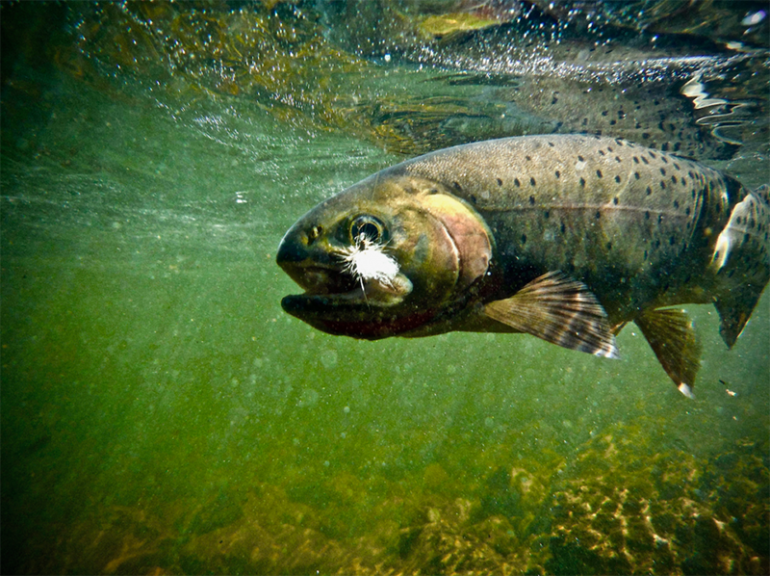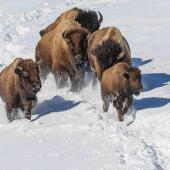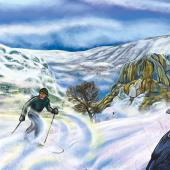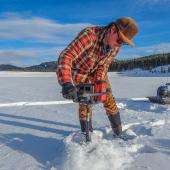They're Baaacckk...
Restoration efforts are paying off on Yellowstone Lake.
You know spring is taking its time in Yellowstone when ice floes are cruising down the river between Lake Village and Canyon on Memorial Day.
It’s just been one of those years—lots of late snow, and, as of Monday, more than a solid week of high-country thunderstorms slowed spring to a crawl. Rain gave way to snow atop Dunraven Pass and hail and sleet fell intermittently, soaking the bison and elk grazing among fresh short-grass meadows. A black bear sow kept a watchful eye on two playful cubs just east of Roosevelt, while, 100 yards away, a young bull moose nosed through wet willows, clearly enjoying the chilly May afternoon.
Talk about a traffic jam.
And, while the ice had largely broken up from Yellowstone Lake, it still clung to many of the edges. Big hunks of it retreated beneath Fishing Bridge and into the current of the storied river where, if it stayed intact long enough, it would eventually tumble over the upper falls and likely disintegrate.
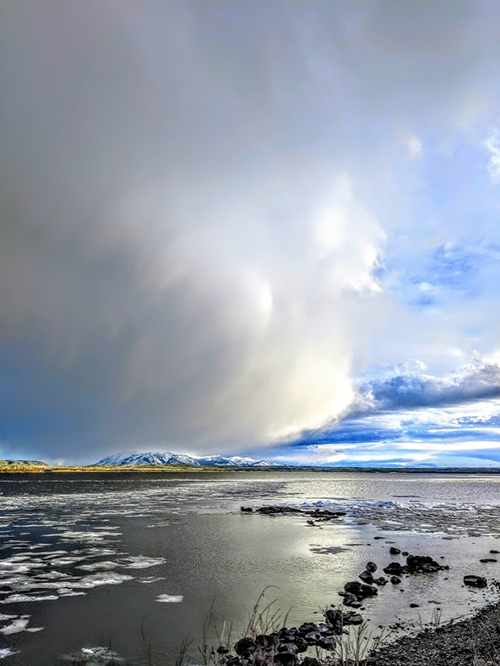
For me, it’s hard to spend a lot of time at the lake. While it’s certainly one of the most beautiful places I’ve been lucky enough to visit, it’s also the site of one of our greatest ecological blunders that, to this day, makes the lake something less than it should be. Invaded by non-native lake trout some 30 years ago, the lake’s native Yellowstone cutthroats all but disappeared. Today, thanks to a determined effort from the National Park Service, TU volunteers and our conservation partners, the native fish are making an encouraging comeback, but we’ll always likely be in the lake trout suppression business. Each year for the last several years, gill nets placed strategically throughout the lake have removed 300,000 invasive lakers—which feed on native cutthroat trout. That efforts is ramping up again this spring.
But this year, after hearing that the native fish are, indeed, responding to lake trout removal, I wanted to spend more time at the lake. Specifically, I wanted to see for myself that Yellowstone cutthroat trout are returning to the waters where they have historically spawned.
There’s no better place to witness this annual migration than at Fishing Bridge.
As I leaned out over the dark water, churned by flowing ice and the near-constant rain and sleet, it took me a bit to get my “fish eye” on. But, after shading my polarized sunglasses from the gray sky, I did see what I was looking for. There, a dozen or so feet below me, a big female cutthroat busied herself sweeping off a gravel redd in preparation for the spawn.
Cutthroats in the lake start their annual migration in April and May, and they’re usually done spawning, whether it be in Yellowstone River at Fishing Bridge or high up in the Thorofare, miles and miles above the lake in the wilds of northwest Wyoming, by July.
This enthusiastic female—and the 15 or so other fish like her that I spied from my perch atop Fishing Bridge—arrived on the early side, and I’m grateful for that. I got to see the beginnings of the next generation of native Yellowstone cutthroat trout in their last true big-water refuge, and the fruits of years of labor invested by TU volunteers and the Park Service fisheries team that simply refused to let these fish go away.
Thanks to all who are still helping save Yellowstone’s signature trout. My kids and, perhaps one day, my grandkids, will be grateful.
Chris Hunt is the national digital director for TROUT Media. His new book, Catching Yellowstone’s Wild Trout: A Fly Fishing History and Guide, hits bookshelves June 17, but can be preordered online. This article originally appeared on Trout Unlimited's website.

